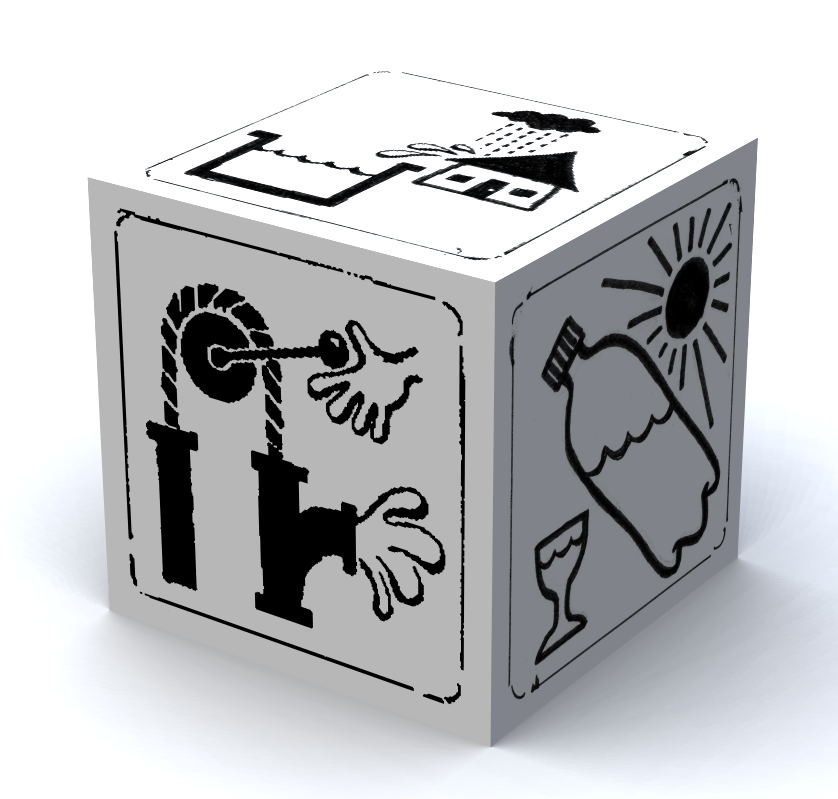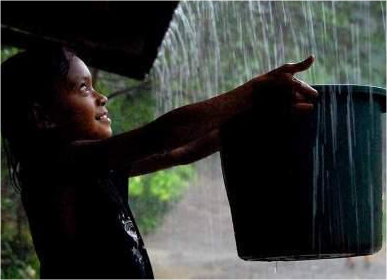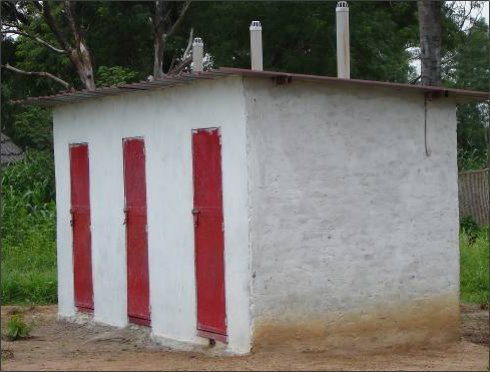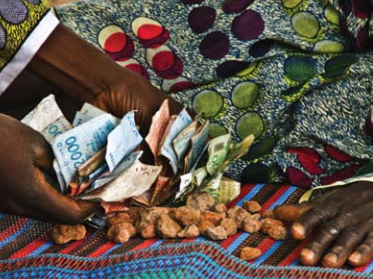Difference between revisions of "Main Page"
| Line 19: | Line 19: | ||
|<div class="floatleft" align=left >{{Icon|file=Water4icons.png|alt=Water Portal|width=140px|link=Water Portal}}</div> The [[Water Portal|Water Portal]] contains information on water collection, pumping and transportation, storage, treatment, and use of water. | |<div class="floatleft" align=left >{{Icon|file=Water4icons.png|alt=Water Portal|width=140px|link=Water Portal}}</div> The [[Water Portal|Water Portal]] contains information on water collection, pumping and transportation, storage, treatment, and use of water. | ||
|- | |- | ||
| − | ! | + | !<h2 style="margin:0; font-size:130%; text-align:left; color:#535353; padding:.2em 0.4em;">Sanitation Portal</h2> |
| − | |||
| − | <h2 style="margin:0; font-size:130%; text-align:left; color:#535353; padding:.2em 0.4em;">Sanitation Portal</h2> | ||
|- | |- | ||
|<div class="floatleft" align=left >{{Icon|file=Sanitation4icons.png|alt=Sanitation Portal|width=140px|link=Sanitation Portal}}</div> The [[ Sanitation Portal |Sanitation Portal]] contains information on toilets, collection, transportation, treatment, use of products, hygiene, and training materials. | |<div class="floatleft" align=left >{{Icon|file=Sanitation4icons.png|alt=Sanitation Portal|width=140px|link=Sanitation Portal}}</div> The [[ Sanitation Portal |Sanitation Portal]] contains information on toilets, collection, transportation, treatment, use of products, hygiene, and training materials. | ||
|- | |- | ||
| − | + | !<h2 style="margin:0; font-size:130%; text-align:left; color:#535353; padding:.2em 0.4em;">Finance Portal</h2> | |
| − | ! | ||
| − | <h2 style="margin:0; font-size:130%; text-align:left; color:#535353; padding:.2em 0.4em;">Finance Portal</h2> | ||
|- | |- | ||
|<div class="floatleft" align=left >{{Icon|file=finance portal box.png|alt=Finance Portal|width=140px|link=Finance Portal}}</div> The [[ Finance Portal |Finance Portal]] contains information on the costs needed to finance, how to finance these costs, and how to monitor finance. | |<div class="floatleft" align=left >{{Icon|file=finance portal box.png|alt=Finance Portal|width=140px|link=Finance Portal}}</div> The [[ Finance Portal |Finance Portal]] contains information on the costs needed to finance, how to finance these costs, and how to monitor finance. | ||
|- | |- | ||
| − | ! | + | !<h2 style="margin:0; font-size:130%; text-align:left; color:#535353; padding:0.2em 0.4em;">Sustainability Portal - <font color=#FF0000>NEW!</font></h2> |
| − | <h2 style="margin:0; font-size:130%; text-align:left; color:#535353; padding:0.2em 0.4em;">Sustainability Portal - <font color=#FF0000>NEW!</font></h2> | ||
|- | |- | ||
|<div class="floatleft" align=left >{{Icon|file=sust portal icon.png|alt=Sustainability Portal|width=140px|link=Sustainability Portal}}</div> The [[Sustainability Portal|Sustainability Portal]] contains information on numerous sustainability frameworks, tools, and methods, using the F.I.E.T.S approach. | |<div class="floatleft" align=left >{{Icon|file=sust portal icon.png|alt=Sustainability Portal|width=140px|link=Sustainability Portal}}</div> The [[Sustainability Portal|Sustainability Portal]] contains information on numerous sustainability frameworks, tools, and methods, using the F.I.E.T.S approach. | ||
| Line 42: | Line 37: | ||
|class="MainPageBG" style="width:50%; border:1px solid #E3E7EC; background:#ffffff; vertical-align:top"| | |class="MainPageBG" style="width:50%; border:1px solid #E3E7EC; background:#ffffff; vertical-align:top"| | ||
{| width="100%" cellpadding="2" cellspacing="5" style="vertical-align:top; background:#ffffff;"| | {| width="100%" cellpadding="2" cellspacing="5" style="vertical-align:top; background:#ffffff;"| | ||
| − | ! | + | !<h2 style="margin:0; font-size:130%; text-align:left; color:#535353; padding:0.2em 0.4em;">What's happening now</h2> |
| − | <h2 style="margin:0; font-size:130%; text-align:left; color:#535353; padding:0.2em 0.4em;">What's happening now</h2> | ||
|- | |- | ||
|<font size="3">'''NEW ARTICLE PAGE: [[Integrated Water Resources Management (IWRM)]]'''</font> | |<font size="3">'''NEW ARTICLE PAGE: [[Integrated Water Resources Management (IWRM)]]'''</font> | ||
| Line 51: | Line 45: | ||
Managers, whether in the government or private sectors, have to make difficult decisions on water allocation. More and more they have to apportion diminishing supplies between ever-increasing demands. Drivers such as demographic and climatic changes further increase the stress on water resources. The traditional fragmented approach is no longer viable and a more holistic approach to water management is essential. This is the rationale for the Integrated Water Resources Management (IWRM) approach that has now been accepted internationally as the way forward for efficient, equitable and sustainable development and management of the world's limited water resources and for coping with conflicting demands. | Managers, whether in the government or private sectors, have to make difficult decisions on water allocation. More and more they have to apportion diminishing supplies between ever-increasing demands. Drivers such as demographic and climatic changes further increase the stress on water resources. The traditional fragmented approach is no longer viable and a more holistic approach to water management is essential. This is the rationale for the Integrated Water Resources Management (IWRM) approach that has now been accepted internationally as the way forward for efficient, equitable and sustainable development and management of the world's limited water resources and for coping with conflicting demands. | ||
|- | |- | ||
| − | ! | + | !<h2 style="margin:0; font-size:130%; text-align:left; color:#535353; padding:0.2em 0.4em;">More news</h2> |
| − | <h2 style="margin:0; font-size:130%; text-align:left; color:#535353; padding:0.2em 0.4em;">More news</h2> | ||
|- | |- | ||
| | | | ||
| Line 63: | Line 56: | ||
|- | |- | ||
| − | ! | + | !<h2 style="margin:0; font-size:130%; text-align:left; color:#535353; padding:0.2em 0.4em;">Contributing to Akvopedia</h2> |
| − | <h2 style="margin:0; font-size:130%; text-align:left; color:#535353; padding:0.2em 0.4em;">Contributing to Akvopedia</h2> | ||
|- | |- | ||
|'''Share your news and knowledge''' on water and sanitation by contributing articles to the Akvopedia. We've used the same conventions as the well-known online resource Wikipedia, so adding and editing articles is quick and easy to learn. This [[Editing an Akvopedia page | graphical guide]] will get you started; more detailed information about editing wiki articles is available in the help pages: [[Help:Contents]] | |'''Share your news and knowledge''' on water and sanitation by contributing articles to the Akvopedia. We've used the same conventions as the well-known online resource Wikipedia, so adding and editing articles is quick and easy to learn. This [[Editing an Akvopedia page | graphical guide]] will get you started; more detailed information about editing wiki articles is available in the help pages: [[Help:Contents]] | ||
|- | |- | ||
| − | ! | + | !<h2 style="margin:0; font-size:130%; text-align:left; color:#535353; padding:0.2em 0.4em;">Editorial support</h2> |
| − | <h2 style="margin:0; font-size:130%; text-align:left; color:#535353; padding:0.2em 0.4em;">Editorial support</h2> | ||
|- | |- | ||
|[[Image:Winona akvo2.jpg|right|120px]] | |[[Image:Winona akvo2.jpg|right|120px]] | ||
Revision as of 21:57, 3 April 2014
|






